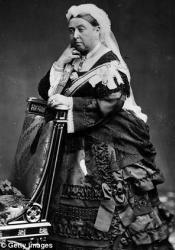Mourning in the Victorian Era: The Death of Prince Albert as a Catalyst for Mourning Traditions
The mourning process in the Victorian Era was a very different process than it is now. Women in the Victorian Era definitely had very different lifestyle expectations than women experience now. Women were considered very emotional and fair creatures and were not even allowed to attend funerals as it was not deemed appropriate. We see this in play in Elisabeth Gaskell's "North and South" when Margaret wishes to attend her mothers funeral and her father states that women do not normally attend such gatherings.
With this in mind, it is important to look into the mourning processes of women in the Victorian Era to better understand the traditions that Margaret experienced. Fashion played a large part in the mourning process of a woman. Queen Victoria influenced a lot of people in their mourning process as she dealt with the death of her husband, Prince Albert, very publicly. Prince Albert passed away unexpectedly on December 14th, 1861 from Typhoid fever. Queen Victoria did not take this well and went into her darkest days following his death. She experienced a depression and did not attend as many social gatherings following his death. She represented this sorrow by wearing all black for years following his death.
Wearing black velvet or satin dresses with capes, covered in beads and sequins was a common trend and it became a staple as Queen Victoria continuously for the next forty years of her life following Prince Albert’s death. The picture attached shows an example of a black outfit that Queen Victoria would wear. This trend continued for years and women around London would wear similar dresses in their mourning process. The death of Prince Albert was a large factor in the fashion choices women made when they were in their mourning processes.
Works Cited:
Photo: “Victorian Mourning Customs.” Lisa's History Room, lisawallerrogers.com/tag/victorian-mourning-customs/.

